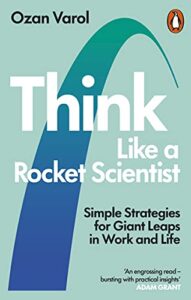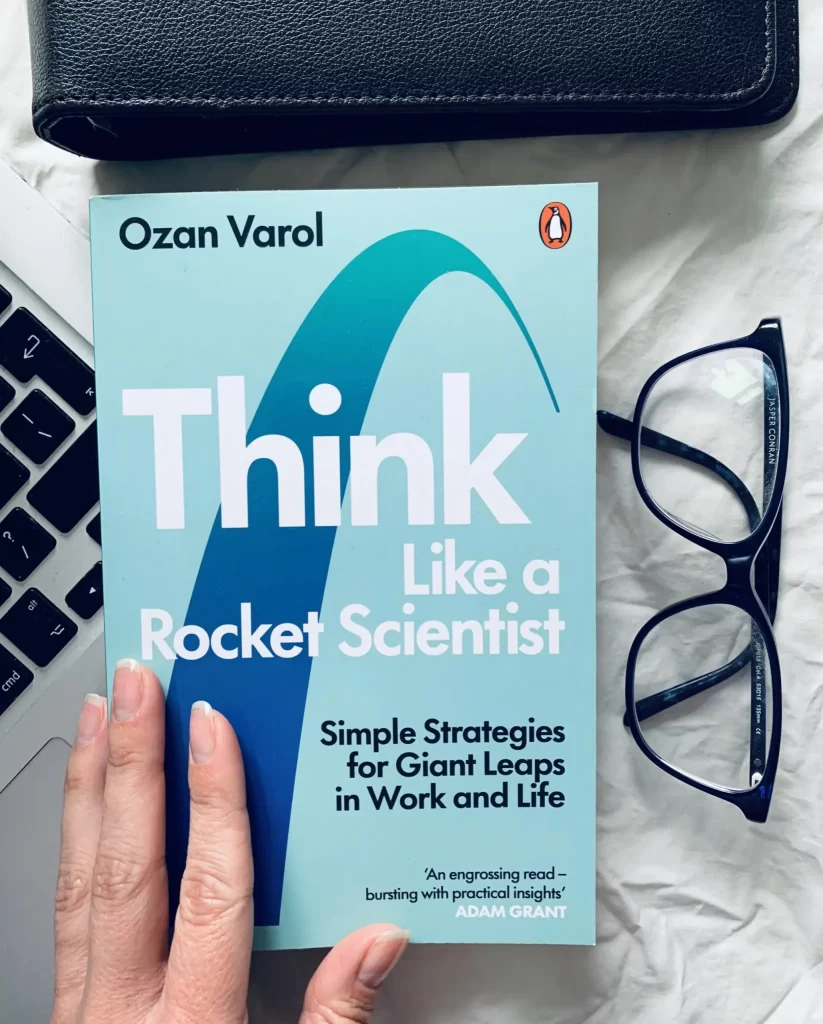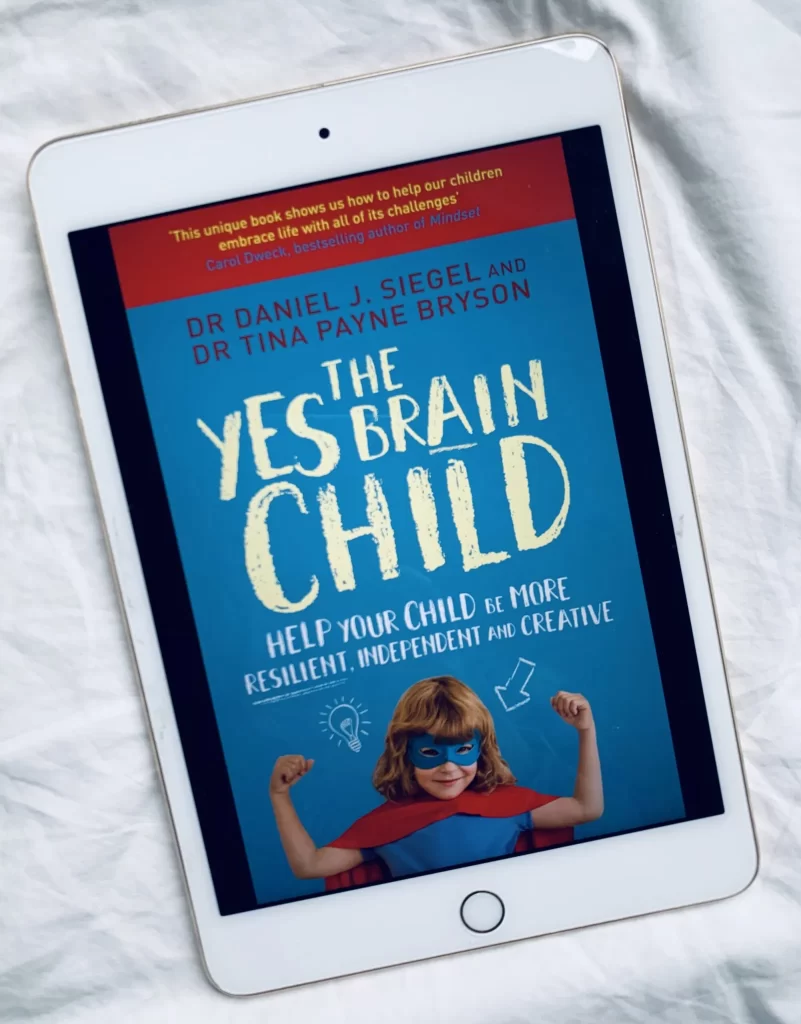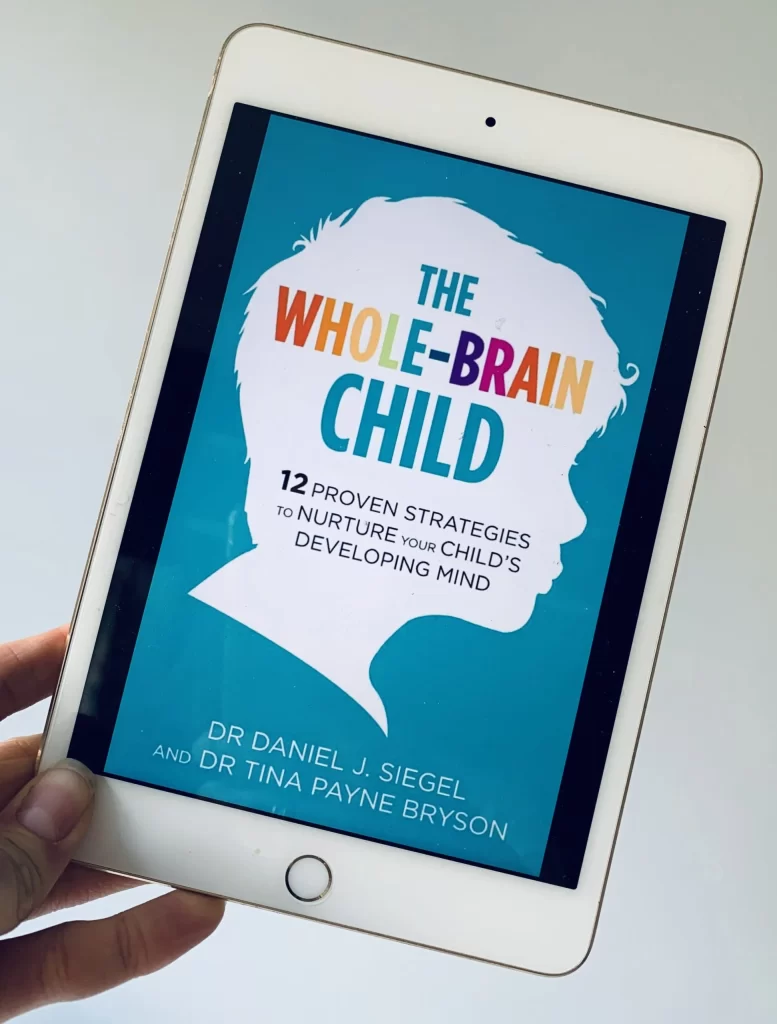 Think Like a Rocket Scientist
Think Like a Rocket Scientist
Simple Strategies for Giant Leaps in Work and Life
Ozan Varol
Virgin Digital (14 April 2020)
About the author
Ozan Varol is a rocket scientist, award-winning law professor, renowned speaker and author of non-fiction books. A native of Istanbul, Turkey, Ozan moved to the United States by himself at 17 to attend Cornell University and major in planetary sciences. While there, he served on the operations team for the 2003 Mars Exploration Rovers project that sent two rovers to Mars. He later became a law professor to influence others to make interplanetary leaps on this planet. He has written numerous award-winning articles that are taught in colleges and graduate schools. His work has been featured in domestic and foreign media, including BBC, TIME, CNN, Washington Post, Slate, and Foreign Policy.
About the book:
“To think like a rocket scientist is to look at the world through a different lens. Rocket scientists imagine the unimaginable and solve the unsolvable. They transform failures into triumphs and constraints into advantages. They view mishaps as solvable puzzles rather than insurmountable roadblocks. They’re moved not by blind conviction but by self-doubt; their goal is not short-term results but long-term breakthroughs. They know that the rules aren’t set in stone, the default can be altered, and a new path can be forged. […]
In the modern era, rocket science thinking is a necessity. The world is evolving at dizzying speed, and we must continuously evolve with it to keep pace. Although not everyone aspires to calculate burn-rate coefficients or orbital trajectories, we all encounter complex and unfamiliar problems in our daily lives. Those who can tackle these problems – without clear guidelines and with the clock ticking – enjoy an extraordinary advantage. […]
You won’t be a rocket scientist by the end of this book. But you’ll know how to think like one.”
Ozan Varol is an extraordinary individual – a rocket scientist, award-winning law professor, and author on a mission to help people to reimagine the status quo. And his insights will blow your mind faster than a Falcon Heavy launch.
I came across Ozan during a captivating session at my LSE Book Club, where he delved into his book and shared fascinating ideas on thinking like a rocket scientist. Intrigued and inspired, I immediately got my hands on the book and immersed myself in its pages. This year, I revisited it and compiled my notes, eager to share Ozan’s brilliance.
Now. The book is simply brilliant. Drawing from research and his own experiences as a rocket scientist at NASA, Varol teaches us contrarian thinking and reveals the secrets behind achieving audacious goals and unleashing our full potential. Through captivating stories and relatable examples, he challenges us to break free from the gravitational pull of the ordinary and embrace failure as a launchpad for success. He shows us how curiosity, interdisciplinary thinking, and a healthy dose of scepticism can transform the way you approach challenges in all areas of your life.
I personally LOVED the book and cannot recommend it enough to anyone looking to elevate their personal growth journey. Moreover, I highly recommend this book to all parents and educators as the skills Ozan teaches in this book are crucial for thriving in our fast-changing world.
As you can imagine, the book is packed with big ideas, and we’ll merely scratch the surface in these notes. So if you feel inspired, grab the book for a deep dive into Ozan’s wisdom.
Think Like a Rocket Scientist also comes with a workbook – check it out! It’s an absolute gem!
Key insights:
Navigate uncertainty (tip – just start walking)
“When we face uncertainty, we often manufacture excuses for not getting started. I’m not qualified. I don’t feel ready. I don’t have the right contacts. I don’t have enough time. We don’t start walking until we find an approach that’s guaranteed to work (and preferably one that comes with job satisfaction and a six-figure salary).
But absolute certainty is a mirage. In life, we’re required to base our opinions on imperfect information and make a call with sketchy data. […]
The path, as the mystic poet Rumi writes, won’t appear until you start walking. […]
The secret is to start walking before you see a clear path.
Start walking, even though there will be stuck wheels, broken drills, and exploding oxygen tanks ahead.
Start walking because you can learn to walk backward if your wheel gets stuck or you can use duct tape to block catastrophe.
Start walking, and as you become accustomed to walking, watch your fear of dark places disappear.
Start walking because, as Newton’s first law goes, objects in motion tend to stay in motion—once you get going, you will keep going.
Start walking because your small steps will eventually become giant leaps.
Start walking, and if it helps, bring a bag of peanuts with you for good luck.
Start walking, not because it’s easy, but because it’s hard.
Start walking because it’s the only way forward.”
Here’s a simple yet profoundly powerful secret: if you want to make progress in life or business, all you need to do is start walking! Sitting around and waiting for perfect clarity or that elusive feeling of readiness won’t get you anywhere. Confidence stems from competence, and the only way to develop competence is through action. (Tip: deliberate practice and grit go a long way.)
Now. Life is a wild ride of uncertainty and constant change. Therefore, our ability to forge ahead despite the obstacles we encounter is a crucial skill that drives progress and innovation. By consistently taking small steps over an extended period, you’ll witness a radical transformation. That’s the Compound Effect in action.
Question for you: is there anything you’d like to figure out in your life? Identify the first couple of steps and just start walking!
A mind at play – ignite breakthroughs with thought experiments
“You can capture a childlike curiosity without physically regressing to your childhood or developing Peter Pan syndrome. Reconnecting with your inner child might be as easy as pretending to be a seven-year-old. This suggestion sounds bizarre, but it works. In one study, when participants were instructed to imagine themselves as seven-year-olds with free time, they performed better in objective tests of creative thinking. For this reason, the MIT Media Lab—devoted to “the unconventional mixing and matching of seemingly disparate research areas”—has a section called Lifelong Kindergarten.
Minds are far more malleable than we assume. If we pretend that life is one long kindergarten, our minds just might follow.”
In line with other luminaries of creativity, Ozan emphasizes that play is the foundation of innovation, driving progress in our world.
Creative problem-solving thrives on a playful mindset. So, the next time you need to tap into your creative power, unleash your imagination and pretend to be a 7-year-old! Here is also my super quick tip on how to get into the playful mood instantly.
To ignite your creative juices, here are some ideas from the book
- Get bored more often – boredom activates “the default mode” of your brain through which some of your best ideas appear. Check out our notes on Manoush Zomorodi’s great book Bored and Brilliant to get some practical ideas on how to get bored like a pro!
- Compare apples to pears – comparing seemingly dissimilar or unrelated things lead to new creative ideas and solutions. So surround yourself with people with different backgrounds, explore new hobbies and develop multiple interests.
- Collaborate with others – Recognize that groundbreaking ideas almost always involve a collaborative component. Seek opportunities to collaborate and exchange ideas with others, as their perspectives can spark fresh insights and push your creative boundaries.
- Start with the beginner’s mind – Take a step back and revisit the fundamental principles. Adopt the mindset of a beginner, known as Shoshin, in Zen Buddhism. James Clear’s article delves into this concept, providing a detailed understanding of the transformative power of approaching things with a fresh perspective.
P.S.: if you want to dive deeper into the science of play, check out our notes on Stewart Brown’s phenomenal book Play!
Moonshot thinking
“We’re a species of moonshots – though we’ve largely forgotten it.
Moonshots force you to reason from first principles. If your goal is 1 percent improvement, you can work within the status quo. But if your goal is to improve tenfold, the status quo has to go. Pursuing a moonshot puts you in a different league—and often an entirely different game—from that of your competitors, making the established plays and routines largely irrelevant.”
To put it in other words – DREAM BIG! And dream impossible!
As Ozan tells us in the book – altitude is our friend. The higher we fly, the more opportunities we get. Even if our engine fails, we still have some options to glide it to safety. However, at low altitudes, our possibilities are severely constrained.
Another truth bomb from Ozan resonates deeply: What you strive for becomes your ceiling. It’s a lesson that every parent should impart to their children, nurturing their aspirations.
Now, let’s explore practical strategies to propel your moonshot thinking:
- Engage in divergent thinking – adopt a mindset of “This could be done if…” and explore ideas in an open-minded and free-flowing manner, disregarding constraints such as possibilities or budget. Allow your imagination to run wild without limitations.
- Shock the brain – to generate wacky ideas, ask yourself: “What would a science-fiction solution look like?” This prompts your mind to break free from conventional thinking patterns and venture into unexplored territories.
- Do important things first (not the easy ones) – when embarking on a moonshot project, it’s vital to set clear priorities and tackle the most challenging tasks first. By addressing the difficult aspects head-on, you lay a solid foundation for progress and pave the way for extraordinary achievements.
By embracing these strategies, you’ll elevate your thinking, break through self-imposed ceilings, and forge a path towards remarkable accomplishments. So, set your sights high, let your imagination soar, and embrace the audacity to reach for the moon and beyond.
Ozan wraps the chapter up with these inspirational words:
“That’s my moonshot for you: Be more unreasonable. Breakthroughs, after all, are reasonable only in hindsight. “The day before a major breakthrough, it is just a crazy idea,” says aerospace engineer Burt Rutan, who designed the first privately funded spacecraft to reach space. If we restrict ourselves to what’s possible given what we have, we’ll never reach escape velocity and create a future worth getting excited about.
In the end, all moonshots are impossible.
Until you decide to go.”
Question for you – what’s your moonshot?
Reframe questions to generate better answers
“The next time you’re tempted to engage in problem solving, try problem finding instead. Ask yourself, Am I asking the right question? If I changed my perspective, how would the problem change? How can I frame the question in terms of strategy, instead of tactics? How do I flip the thumbtack box and view this resource in terms of its form, not its function? What if we did the reverse? Breakthroughs, contrary to popular wisdom, don’t begin with a smart answer. They begin with a smart question.”
That’s the invaluable lesson we can all learn from scientists: start with the smart question.
In our pursuit of solutions, we often fixate on finding the right answer. However, rocket scientists have a different approach—they begin by exploring the problem itself. By shifting our focus and reframing our questions, new and innovative solutions emerge. As Ozan writes:
“Define your problem as a missing hammer, and the only possible solution is a hammer. Reframe the problem as a protruding nail, and other solutions might work just as well.”
To truly grasp the power of this concept, look no further than the renowned creative thinking experiment known as “The Candle Problem” (it’s definitely worth checking out!). This experiment serves as a testament to the transformative impact of redefining the problem at hand.
Stress-test your ideas
“When we seclude ourselves from opposing arguments, our opinions solidify, and it becomes increasingly harder to disrupt our established patterns of thinking. […]
No one comes equipped with a critical-thinking chip that diminishes the human tendency to let personal beliefs distort the facts. Regardless of your intelligence, Feynman’s adage holds true: “The first principle is that you must not fool yourself—and you are the easiest person to fool.”
Instead of resenting their genetic wiring, scientists have come up with a set of tools to correct for their all-too-human inclination to fool themselves. These tools aren’t just for the scientist. Rather, they’re a set of tactics—an assembly of trajectory correction maneuvers—that we can all use to stress-test our ideas and spot the truth.”
That’s wisdom from Chapter 6: The Power of Flip-Flopping. And it’s all about how to train yourself to think critically to make better decisions. In this chapter, Ozan delves deep into cognitive psychology and equips us with practical tools to enhance our ability to identify errors in judgment and choice.
The key idea is the following: the more confident we feel about what we know, the harder it is to see what we don’t.
In essence, that’s Daniel Kahneman’s WYSIATI (what you see is all there is) principle from his absolutely mind-blowing book Thinking, Fast and Slow. I cannot recommend this book enough if you want to elevate your decision-making skills and understand how our mind works.
Now. Critical thinking stands as a cornerstone skill for rocket scientists, driving progress, saving lives, and saving millions of dollars. Moreover, it is an immensely valuable skill for all of us. With that in mind, here are a few strategies from Ozan on how to challenge ourselves:
- Replace “opinions” with “working hypotheses” – opinions are your “own very clever ideas”. Opinions tend to stick and intertwine with our identity, making us susceptible to errors in judgment. By swapping opinions for working hypotheses, we become more objective.
- Generate multiple hypotheses – “When you’ve got multiple hypotheses, you reduce your attachment to any one of them and make it more difficult to quickly settle on one. As they compete for your attention new and better ideas will emerge.”
- Focus on missing facts – check your blind spots and ask yourself multiple times: What is missing?
- Prove yourself wrong – if we don’t prove ourselves wrong, others will do it for us. So shift your focus from proving yourself right to proving yourself wrong. You will seek different inputs, combat deeply entrenched biases, and open yourself up to competing facts and arguments.
- Ask people to disagree with you (or manufacture opposing voices) – expose yourself to environments where your ideas can be challenged. Winston Churchill, for instance, had a Special Department dedicated to challenging his decisions, offering opposing opinions, and pointing out potential problems. Dr. Carol Dweck highlights this story in her insightful book, Mindset, while discussing the dangers of groupthink and how adopting a growth mindset can help overcome it.
These strategies lay the foundation for critical thinking, a skill that should be taught in schools, particularly as we enter the new era of artificial intelligence.
Nothing succeeds like failure
“We often assume that failure has an endpoint. We fail until we succeed and then stop failing to reap the benefits of our newly minted position in the pecking order. But failure isn’t a bug to get out of our system until success arrives. Failure is the feature. If we don’t develop a habit of failing regularly, we court catastrophe.”
First of all, failure is a portal to progress. No success comes without failure. Period.
So if we want to achieve something, we need to get comfortable with failing (with a growth mindset, of course!).
Now. Every failure presents us with invaluable data that propel us closer to our goals and offers opportunities for improvement. And these lessons are priceless!
In the book, Ozan teaches us how to fail like a rocket scientist. Here are my top takeaways:
- Cultivate tolerance to failure. And the only way to develop immunity is to fail more frequently and with grace.
- The goal is not to fail fast but to learn fast.
- We should celebrate the lessons from failure, not the failure itself.
- Approach every failure with curiosity and get excited about it (“How fascinating!”)
- Focus on inputs rather than outputs to learn faster from your failure. Ozan writes: “If we engage in resulting, we reward bad decisions that lead to good outcomes. Conversely, we change good decisions merely because they produced a bad outcome.”
- Two important questions to ask yourself about a failure: What went wrong with this failure? What went right with this failure?
So embrace your failures and mistakes and approach them like a rocket scientist!
Action steps for you:
1. Cultivate curiosity and cross-pollinate your life: e.g. read a book or a magazine on a subject you know nothing about; attend a conference designed for an industry unrelated to the one you work in; sign-up for a class to learn something new; explore different cultures.
2. Build a habit of carefully examining challenges to test whether the problem you’re trying to solve is actually the problem that needs solving. Pick a challenge you are tackling right now and follow these steps:
- Write down the first set of solutions that popped up in your mind.
- Now frame the problem broadly in terms of what you’re trying to do (put your favoured solution aside). “Ask yourself, What problem are these tactics here to solve? This question requires abandoning the what and the how and focusing on the why.” That will be your strategy.
- Now find other tactics that you initially missed.
3. Apply divergent thinking to a challenge in your professional or personal life. Here is a script from Ozan:
• “Identify three elements of the challenge where your current thinking revolves around feeling an obligation that you ‘should’ do something.
• For each of these three ‘shoulds’, write down the three elements again but replace the word ‘should’ with the word ‘could’.
• For each of the three ‘coulds’, ask yourself whether this is the only course of action? Apply science-fiction thinking. If there were no constraints, what could you do instead?
• Now transition from divergent to convergent thinking and begin considering constraints (e.g., financial, physical, etc.). You’ll find that the ideas you generate will tend to be more creative than if you had begun with convergent thinking. “
Quotes from the book:









